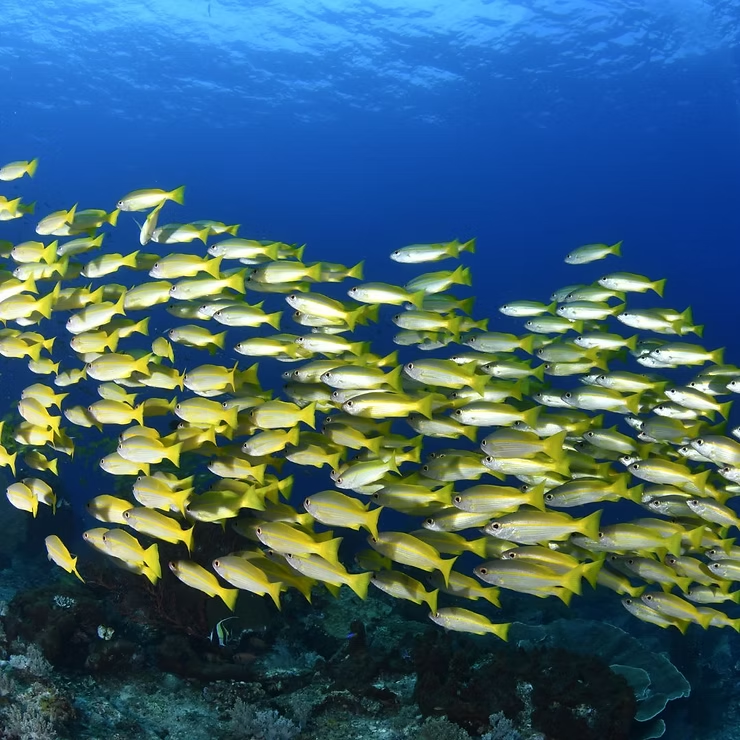Exploring the Depths: A Journey into the Marine Realm
The ocean is a living tapestry of color, mystery, and life. From the glowing spectacles of bioluminescent creatures to the delicate grace of jellyfish, the marine realm offers an endless array of wonders. This journey beneath the waves uncovers not only the beauty of marine creatures but also the innovations and conservation efforts working to protect their fragile world.
Diving into the Abyss
The Lure of the Deep
The deep sea is often called Earth’s final frontier. Sunlight does not penetrate its depths, yet life thrives in remarkable ways. We are drawn to this mysterious realm by the thrill of discovery, the beauty of bioluminescent organisms, and the resilience of creatures adapted to crushing pressure and darkness. Each new encounter reminds us of nature’s vastness and its endless surprises.
- The mystery of unexplored territories
- The excitement of encountering new species
- The challenge of extreme conditions
Tools of Discovery
Exploring the deep would not be possible without advanced technology. Submersibles act as underwater vessels, allowing scientists to witness life firsthand, while Remotely Operated Vehicles (ROVs) extend our reach into places too dangerous for humans. Outfitted with cameras and robotic arms, these tools enable research with minimal harm to fragile species and open doors to discoveries in medicine and biotechnology.
Bioluminescence: Nature’s Light Show
Bioluminescence turns deep sea animals into natural lanterns. This glow is not just decorative—it is a survival tool. Creatures emit light to lure prey, escape predators, or attract mates. The chemical process, powered by luciferin and luciferase, creates an underwater galaxy that continues to inspire scientific research and potential innovations in sustainable energy and healthcare.
Jellyfish: Drifting Dancers of the Ocean
Grace in Motion
Jellyfish shimmer like living kaleidoscopes, their translucent bodies reflecting light in endless patterns. Their pulsating bells propel them gently through the water, while their flowing tentacles add elegance to their movement. Each jellyfish is unique, making them symbols of the ocean’s ethereal beauty.
Predators and Prey
Though delicate in appearance, jellyfish are skilled hunters. Their tentacles carry stinging cells to capture plankton and small fish. Yet they too are prey, providing food for sea turtles, large fish, and even other jellyfish. These relationships highlight their essential role in maintaining marine food webs.
Familiar Ocean Icons
Dolphins
Dolphins enchant us with intelligence and playful acrobatics. Communicating through whistles and clicks, they embody the ocean’s joy and remind us of the importance of protecting their habitats.
Sharks
Often misunderstood, sharks are vital apex predators. They regulate marine populations and have existed for over 400 million years. Protecting sharks from overfishing ensures the health of entire ecosystems.
Clownfish
Known for their vivid stripes and their partnership with sea anemones, clownfish exemplify symbiosis. They are small but essential contributors to coral reef health, balancing the ecosystem they inhabit.
Seahorses: Ocean’s Enigmas
Unique Anatomy and Diet
With their equine profiles and prehensile tails, seahorses stand apart from other fish. They feed on tiny crustaceans through rapid suction feeding, lacking stomachs and thus eating constantly to survive.
Parenting Role Reversal
Seahorses are remarkable for their reproductive strategy: males carry fertilized eggs in a pouch until the young are born. This rare adaptation demonstrates the diverse evolutionary strategies of marine life.
Symbiosis Beneath the Waves
- Cleaner shrimp: Provide parasite removal for fish in exchange for food, maintaining reef health.
- Bobtail squid: Partner with bioluminescent bacteria for camouflage, a dazzling example of cooperation.
- Coral reefs: Serve as biodiversity hotspots, offering habitat, protection, and resources while facing threats from climate change and human activity.
Conservation and Research
The Call for Sustainable Practices
Safeguarding marine life requires sustainable fishing, responsible tourism, and stronger protections for vulnerable habitats. Organizations worldwide are leading initiatives to balance human activity with ocean preservation.
Challenges in Deep Sea Exploration
Exploring extreme environments poses obstacles, from crushing pressure to scarce data. Still, each expedition expands our understanding of marine ecosystems and reveals potential applications for human benefit.
The Role of Aquariums
Modern aquariums are centers for education, research, and conservation. They showcase marine wonders responsibly, inspire public awareness, and help foster global commitment to preserving ocean life.
Conclusion
The ocean is a world of mystery and brilliance, where jellyfish drift like dancers, seahorses defy convention, and bioluminescent creatures glow in eternal night. As we deepen our understanding of this realm, the responsibility to protect it becomes ever clearer. By embracing sustainable practices and supporting conservation, we can ensure the magic of the sea endures for generations.
Frequently Asked Questions
What adaptations help deep sea creatures survive?
They rely on traits like bioluminescence, pressure tolerance, and cold resistance to thrive in darkness.
How do jellyfish move?
They pulse their bell-shaped bodies to move while drifting along with currents.
Which ocean animals are most popular?
Dolphins and sharks are especially admired for their intelligence, acrobatics, and ecological importance.
What makes seahorses unique?
They have horse-like heads, prehensile tails, and males carry developing young in pouches.
What are examples of marine symbiosis?
Cleaner shrimp with fish, clownfish with sea anemones, and squid with glowing bacteria.
Why is research on deep sea creatures important?
It reveals adaptations with medical and biotechnological potential and guides conservation efforts.
How do scientists study deep sea life?
They use vessels, submersibles, and ROVs equipped with cameras and sampling tools.
What role do aquariums play?
They educate the public, support conservation, and provide sustainable ways to experience marine life.

